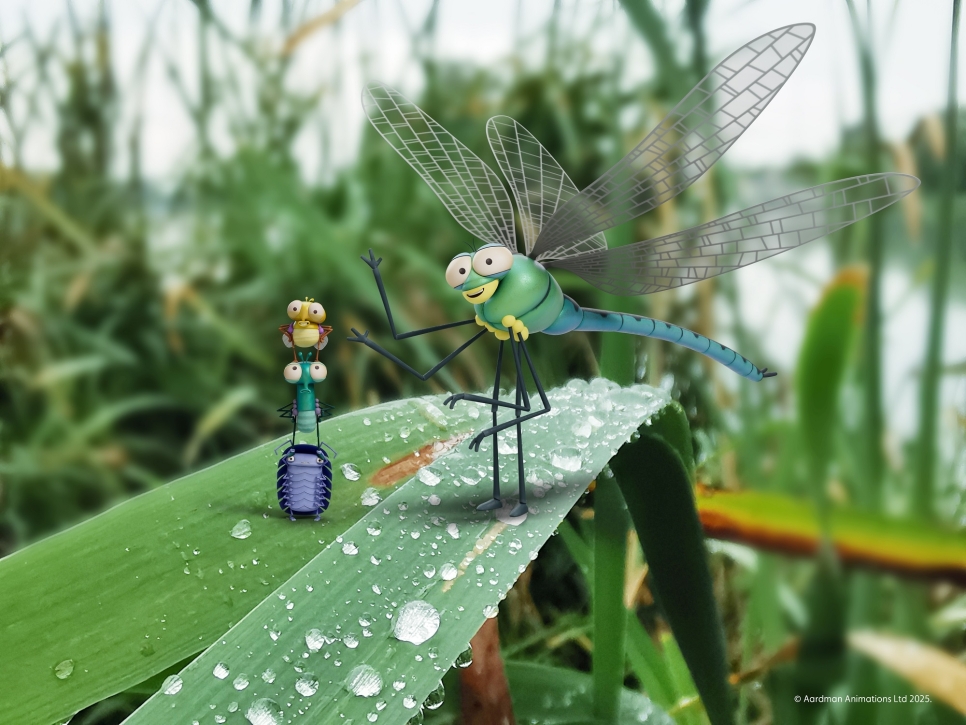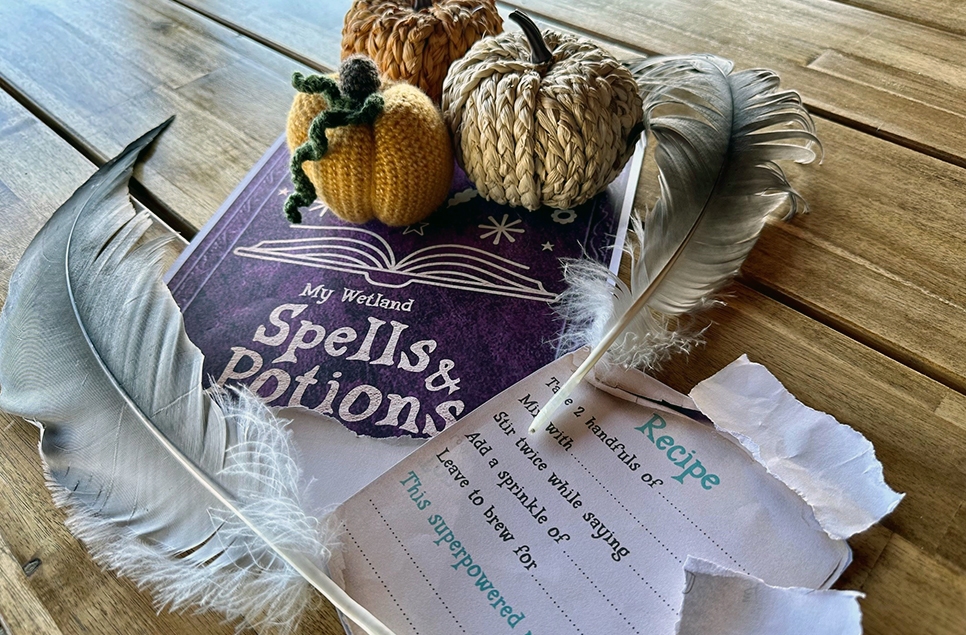Gwas y Neidr: Servant of the Snake
Dragonflies: Why are these flying insects associated with snakes?
Broad wings glitter iridescence as exoskeletons scatter light into spectrum. Something prehistoric catches your eye. Metamorphosis, an awakening. The Summer Crown is borne from armada, an age where dragons fill the sky.

Servants of the Snake – The Mystery and Science of Dragonflies
No other species embodies the arrival of Summer at WWT Llanelli more than the dragonfly. These aerobatic jewels have been a part of Earth’s ecosystems for roughly 300 million years, gracing the skies a massive 100 million years before the first dinosaur - twice the span of the Jurassic period!
Ancient dragonflies evolved during a time when the Earth’s atmosphere was far richer in oxygen, allowing their spiracular breathing systems to accommodate enormous body sizes and 2.5-foot-long wingspans. The atmosphere has since changed, yet the dragonfly descendants, though smaller, have persisted in demanding awe and mystery in our imaginations.

The scientific mystery of the dragonfly began in the 18th century when entomologist Johan Fabricius classified dragonflies and damselflies into the order ‘Odonata’. This term presumably stems from the Greek word odont (tooth), yet dragonflies and damselflies are not unique in having toothed mandibles. Most insect mandibles are toothed, such as those of beetles or grasshoppers, and therefore classifying these creatures based on an unremarkable trait seems rather odd. However, if we explore European folklore, enigmatic names for dragonflies seem commonplace.
Folklore
Dragonflies hold a dark and unfair reputation in European folklore; in Norway, they are referred to as Eye Pokers, and in Portugal, Eye Snatchers. Several English vernacular names for dragonflies misleadingly allude to them having powerful stings, with Horse Stinger and Devil’s Darning Needle among the most alarming. They are often associated with snakes, as demonstrated by their Welsh name, Gwas y Neidr, or Servant of the Snake. Such serpentine superstitions even span the Atlantic Ocean, where in North America, the Dakota people claim dragonflies to be witches’ familiars and the Pueblo and Zuni People believe Dragonflies to follow snakes beneath the Earth to heal them.
Where do these associations originate? Female dragonflies have long ovipositors that look like stings, but they're actually designed to lay their eggs at speed in water. When threatened, they can be used to administer a mild sting but this is extremely rare and never unprovoked. Perhaps their elongated abdomens and bright colours are too close to serpentine morphology for the human psyche to ignore, such is the primal fear that snakes have carved within our collective unconscious. Yet, in the Far East, perceptions of the dragonfly are remarkably different. They are rarely considered evil. Instead, they are emblems of summer, success, and courage. Such a contrast between the mythologies of East and West serves to deepen the mystery of our ancestral perceptions of the Dragonfly, yet our scientific research into the species has revealed a creature more remarkable than even their superstition suggests.

Perhaps our growing scientific understanding of these magnificent insects can metamorphize our own cultural perspective of them, emerging from dark age gloom to a Renaissance of wonder. They’ve only been around since before the dinosaurs, maybe it’s time we appreciated our dragonfly summer!
A world of colour

Dragonflies are aerial predators that have incredibly detailed visual systems and one of the largest eye-to-body size ratios of metazoans (multicellular organisms). This enables dragonflies to detect prey items against a bright summer sky as they prey on mosquitos, midges, butterflies, moths, and even smaller dragonflies! If there was any doubt over the scientific classification of these creatures or their folkloric tradition, their reputations as dragons is well earned. Their advanced visual systems are not only for the summer hunt, but also play an integral role in interspecies communication as they discern colour within their environment and identify their own kind.

There are only four known ways for animals to produce colour, and dragonflies have been observed to utilise three of them: fluorescence, pigmentary absorption, and structural reflectance (the fourth being bioluminescence). The colours of dragonflies are most often produced by cuticular pigments but also appear from light-scattering nanospheres and wax crystals in their exoskeletons. Ultraviolet light is reflected from the exoskeleton and wings by both iridescence and pruinescence (dusty or frosty surfaces), allowing for interspecific communication of factors such as age, species, and sex.
Life cycle
Though adult dragonflies are aerial predators, they begin life as aquatic nymphs, and the technicolour adults are an ephemeral contrast to their younger selves. Dragonfly nymphs feature darker, plain colouration to camouflage with their aquatic environment and avoid detection by prey as they lurk in the pond gloom. Dragonfly nymphs progress through a series of moults before emerging as an adult, and each moult may result in a slightly different colouration to adapt with the shifting flora of their environments.
Dragonfly nymphs remain in freshwater habitats for several years, hunting other pond denizens with a set of ballistic jaws that resemble a certain extra-terrestrial threat that terrorised science fiction moviegoers in 1979. Dragonfly nymphs can even jet-propel themselves by squirting water from their abdomen to escape larger predators or to pursue more mobile prey. Feasting on other aquatic invertebrates and fish, the nymphs can grow several inches long before finally emerging from the pond as a glittering adult. A newly emerged dragon is a sight to behold, its iridescence crisp in the early summer sun. The prehistoric beast then takes its ravenous appetite to the skies, where it reigns over the winged insects for several months as females lay eggs on the water surface to begin the cycle anew.
Hunt for dragons
Make sure to book on to our daily pond dipping sessions this summer when visiting WWT Llanelli, as you can witness first-hand the ‘perfect organism’ of the ponds. Wetland and riparian habitats are the perfect places for spotting adult dragonflies as they emerge from the water and rule the skies above. A myriad species of dragonfly graces our reserve here at WWT Llanelli and you can find out more about the different species and how to identify them here.



